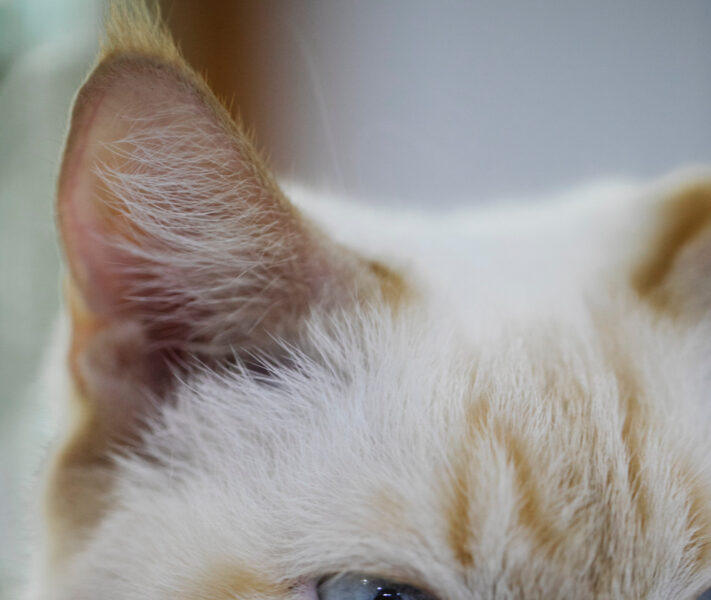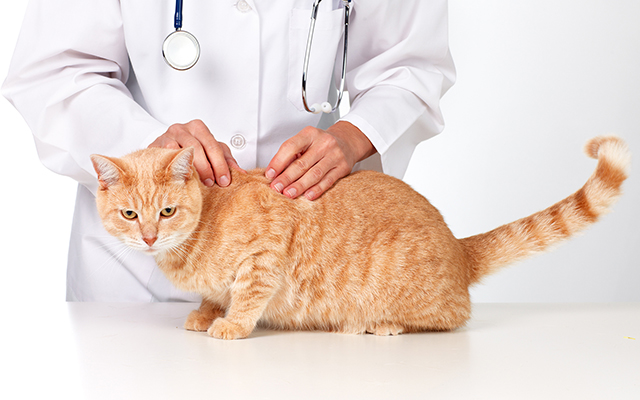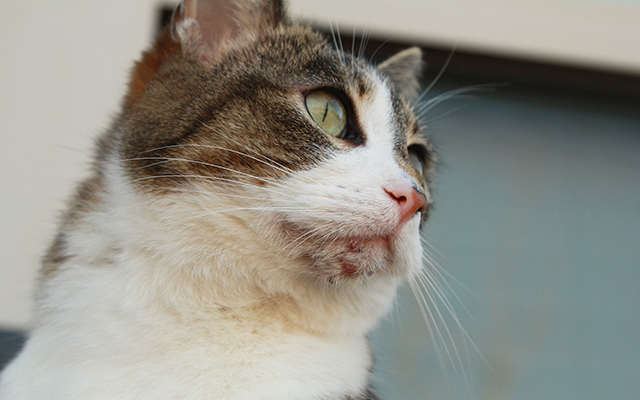Cat ear infection symptoms
Ear infections can be irritating and painful for your cat. If you notice your pet scratching their ear frequently and tilting or shaking their head, they may be trying to alleviate their discomfort. You may observe other symptoms by closely examining your cat’s ear, such as redness or swelling, discharge, a foul smell, wax build-up and debris or dirt.
Common causes of ear infections in cats
Your cat’s ears are full of twists and turns, providing a dark and moist environment where debris can remain trapped, and where tiny organisms such as bacteria, yeast and parasites can thrive.
Ear mites are the second most common external parasite found on pets[1]. These tiny pests are barely a millimetre long and feed on the earwax and skin oils in your cat’s ears. They’re highly contagious and likely to spread to other household pets. In addition to the symptoms described previously, ear mites produce a discharge resembling coffee grounds.
Allergies, hair or wax build-up, yeast or bacteria and debris such as blades of grass and tiny plant buds are other common causes. An external ear injury that’s not properly cleaned and tended to could make the damaged skin vulnerable to bacteria and cause infection.
Ear infections may also be a symptom of an underlying medical problem. For example, cats with diabetes or allergies may be at greater risk of developing an ear infection.
Provide your cat with parasite prevention
Adequate parasite prevention will protect your cat from ear mites and numerous other parasites. Ear mites absorb the antiparasitic treatment during feeding, killing the adult parasite and disrupting its life cycle.
Regularly check and clean your cat’s ears
The best way to manage ear infections is to examine your cat’s ears as part of their grooming routine. Look for cuts, scratches, foreign objects, excessive moisture, debris, discharge or changes in appearance. Healthy cat ears should be pale pink, with minimal wax and a neutral odour.
Your veterinary clinic can show you the proper technique for cleaning your cat’s ears, using cotton balls or gauze. For better results, consider using an ear cleansing solution.
Contact your veterinary clinic for ear infection treatment
If your cat’s ear infection shows no sign of improvement after a few days of care and cleaning, contact your clinic. Your veterinarian will examine your cat’s ears more closely using an otoscope and may analyze debris samples under a microscope to determine the cause. This diagnosis is necessary to rule out any underlying medical problems and to prescribe the appropriate treatment, such as antibiotic ear drops or other medications.










